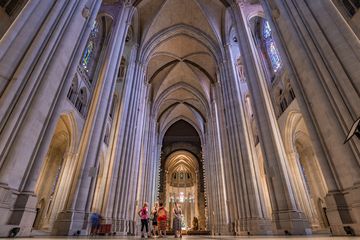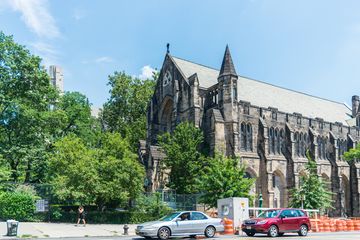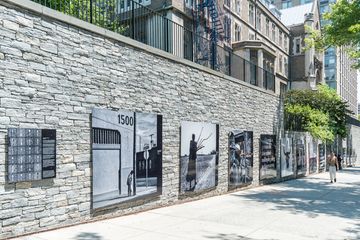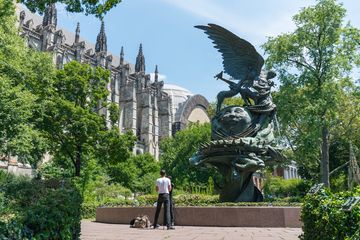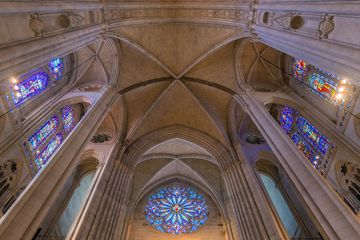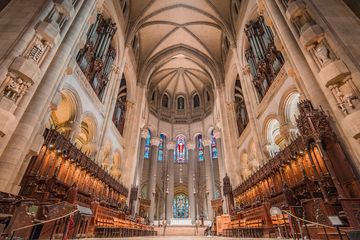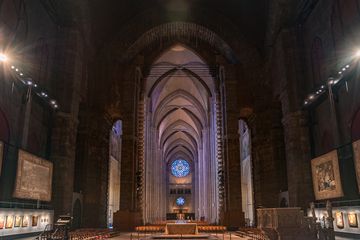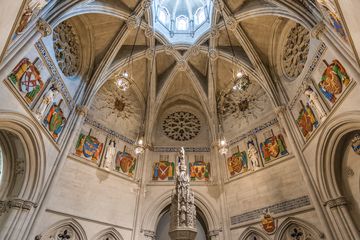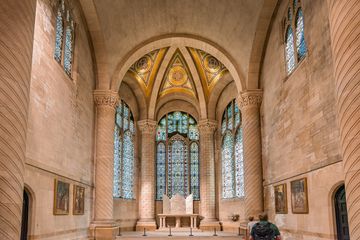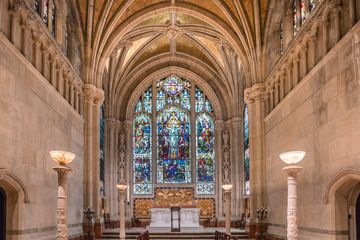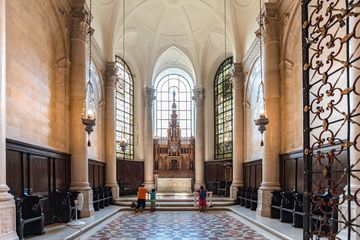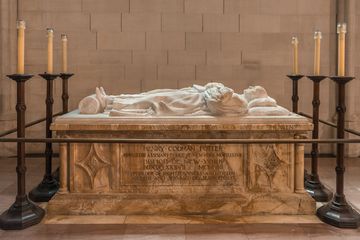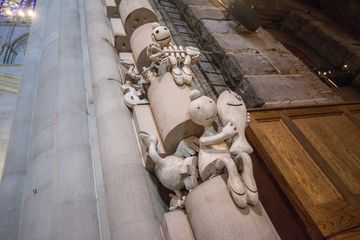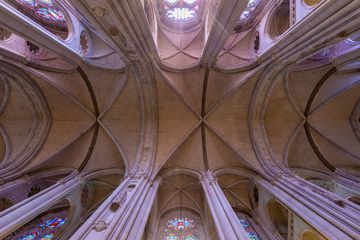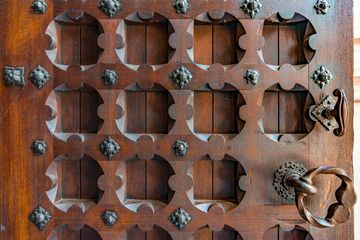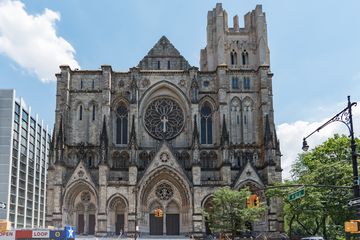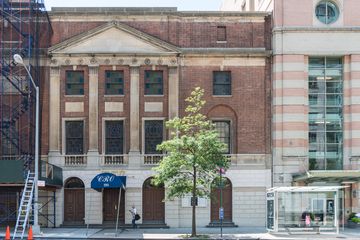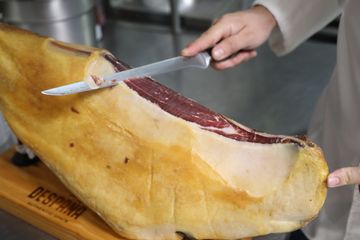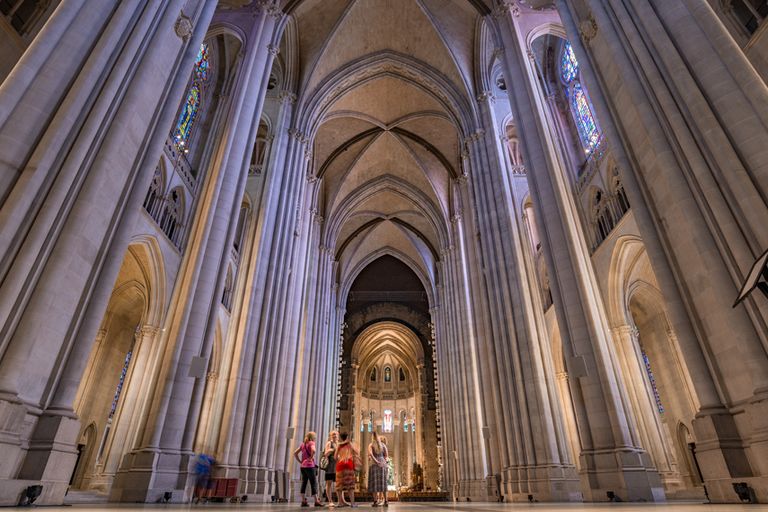
Cathedrals abound throughout Europe, but it is a novelty to come upon one in the United States, not to mention in Manhattan. The Cathedral Church of Saint John the Divine, which sits on a cliff overlooking Morningside Park, seems to be taken straight out of a fairytale. It is considered to be both the largest cathedral and one of the top five largest church buildings in the world.
It was Olivia, a member of the Manhattan Sideways team, who sat down and spoke with the Dean, the Very Reverend James A. Kowalski. He told her that people often ask, "Why in the world would you build it so big." He explained that at the time the cathedral was being constructed in the 1890s, there were not many Episcopalians in the city, so it seemed odd to build an enormous center of Episcopalian worship. In truth, however, Saint John the Divine is much more than an Episcopalian church. The founders, mainly Bishops Hobart and Potter, wanted a "convening place" that would embrace all faiths and nations. Reverend Kowalski pointed out that an all-encompassing spiritual center was needed in New York, "A transnational city of a lot of different faiths and cultures." The cathedral was meant to be a safe place, an American Cathedral that would produce "better informed world citizens."
Reverend Kowalski is very proud that the cathedral has fulfilled its founder's desires and more. He treats the church as a place where he can "put questions in front of people in a non-polarizing way," whether they focus on liturgy, art, or other topics of discourse. "We bring people together in transcendental ways." The members of Saint John the Divine have been able to intelligently converse about themes as varied as the death penalty, race, and gender.
Though the cornerstone of the cathedral was laid down in 1892, the building as of 2016 is technically yet to be completed. Parts of the cathedral were steadily being built throughout the twentieth century, and in 2001, a six-alarm fire broke out, which forced their resources to go towards restoration. Some jokingly call it "Saint John the Unfinished" for this reason, but it is hard for a layperson to notice that it is a work in progress after stepping inside. The space is exquisitely detailed and cavernous - a cohesive whole rather than a century-long patchwork construction project. "We hope to create a visual, spiritual space," Reverend Kowalski explained, pointing out that the church features images from many faiths. "The roof is meant to be a great tent."
Reverend Kowalski is delighted by the diverse groups that he meets under this "great tent." Though there is a small core who call Saint John their home, he clarified that the church is "not a parish." Most who come through are spiritual nomads or tourists. At any given time, there can be 200-1000 people inside the cathedral. He declared that there are often so many countries represented during services that he has to rigorously fact-check his sermons, since among such a varied group, it is likely that someone will be able to intelligently poke holes in any under-researched stories or asides.
The Dean is pleased, however, that he makes more connections each day than he would in any other house of worship. For example, he spoke of one visitor who shared her story of growing up Hindu, becoming a Christian evangelical, and then being ordained as an Anglican priest. "We're truly international," he stated, and went on to say how pleased he is of the work that he has done since he joined the church shortly after 9/11. Pausing for a moment of thought, he added, "I hope it's not presumptuous to say that I hope I've made God happy." He joked that in the end, he would like God to say, "You got up to the plate and you tried to hit the ball."
In addition to being such a diverse cultural center and site for philosophical discourse, Saint John the Divine essentially functions as a museum and concert venue. In 2013, they received an award as one of the top ten art exhibits in New York for South African artist Jane Alexander's anti-apartheid vignettes.
Reverend Kowalski also spoke of Xu Bing, a Chinese artist, asked to hang his birds made of trash after coming to the Blessing of the Animals service - another well-known event at the Cathedral. Since 1984, people have attended the St. Francis Assisi service where precious pets are celebrated and paraded down the Nave. The doors at St. John the Divine are truly open to everyone for in the words of Reverend Kowalski, "This is the city's cathedral."
